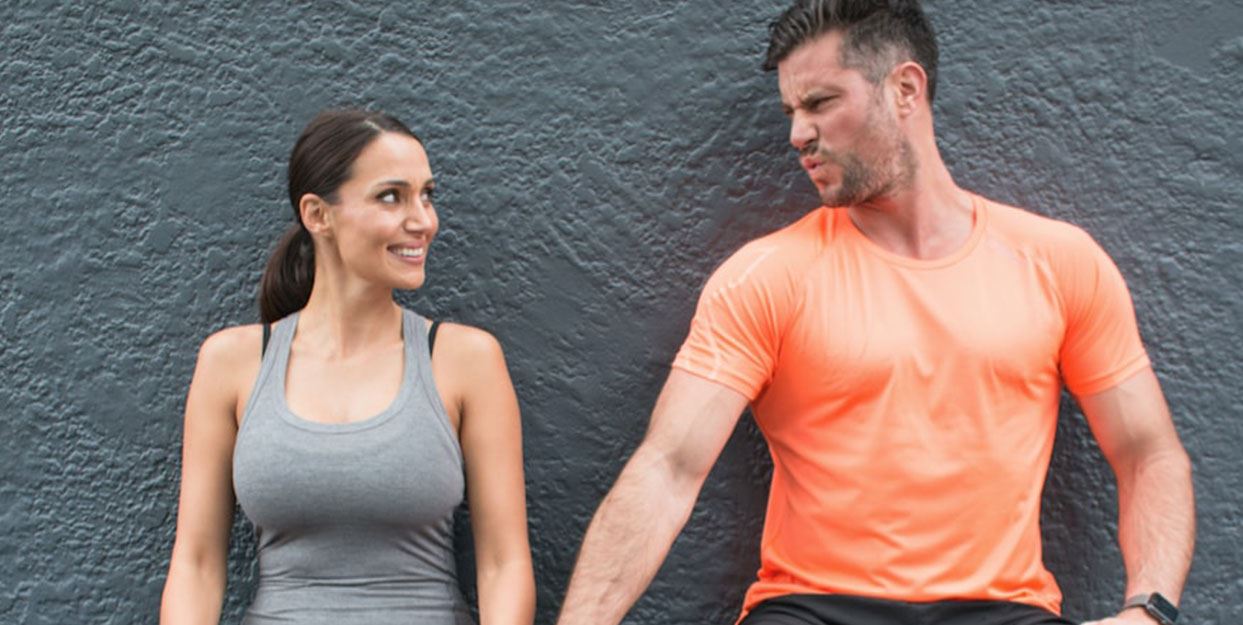DOMS stands for Delayed Onset Muscle Soreness. Most of us have experienced it from time to time. We smash out a tough workout and think we handled it so well, only to find 24 to 48 hours later that we can barely move. It’s not just that you’ve got sore muscles, but climbing stairs is agony and getting up and down from the toilet seat pure torture.
Delayed Onset Muscle Soreness is muscle pain and stiffness resulting from micro-trauma to muscles caused by strenuous or unfamiliar exercise.
To understand DOMS and muscle soreness we need to understand the process of building, strengthening and toning muscle. When we push our muscles to their limits, we get micro tears in the muscle tissue. An accumulation of lactic acid in our muscles also comes with this. With good nutrition and recovery, the tears repair a little bit bigger, firmer and stronger each time we put the muscle under the same stress. This is what we want: putting the body under stress to elicit a response and change. Enough quality workouts strung together will bring about changes greater than most of us realise.
How to relieve the pain of DOMS

Once Delayed Onset Muscle Soreness has set in, you’re in for an uncomfortable few days. The 24 to 48 hours following your workout are typically the worst (hence the name delayed onset), so if you have sore muscles immediately the day after look out: the worst is yet to come!
To some extent you just have to tough it out, but there are a few things you can do to minimise the effect of DOMS.
Light active recovery such as walking in soft sand, swimming or cycling has been shown to reduce muscle soreness. Applying ice packs or immersing yourself in cold water can help reduce the inflammation and pain associated with DOMS. A cold bath (or a swim in the sea if you live in Victoria) can help reduce your recovery period. A lot of research is underway into the effects of antioxidants and natural supplements on DOMS. But, before you purge your bank account on supplements, remember that the findings are modest and inconclusive. No matter how tempting, resist the urge to apply heat to the affected area. While it might feel good at the time, lying in a hot bath or applying heat packs is likely to exacerbate DOMS and extend your recovery time.
So, is DOMS a good thing or a bad thing?
Like so many things, I believe it’s a balance. Getting a little bit sore is a good thing. The discomfort that comes with that delayed muscle soreness feeling is the change taking place in your muscles, so it’s a sign that you are putting in a decent effort, and exercising effectively. On the other hand, being so sore that you can barely walk means you’ve probably overdone it. The key is to be patient and gradually increase the intensity and volume of your workouts as you become better conditioned. Find the balance that works for you. If you are not sore at all after your workouts, perhaps it is time to up the ante. Increase your resistance, or work out at a higher intensity to avoid a plateau. But if you are so sore that going to the bathroom becomes an hour-long ordeal, it might be wise to back it off a little. Love, Sam x

